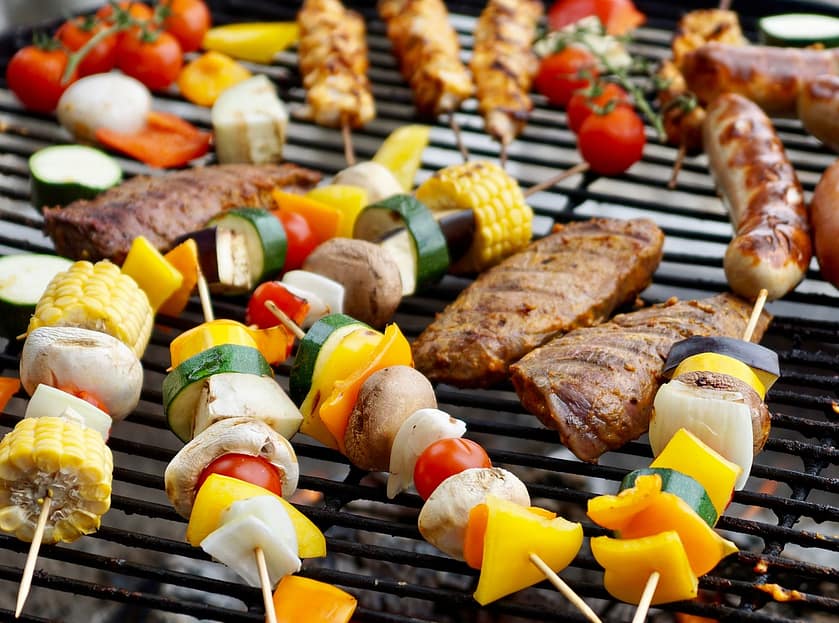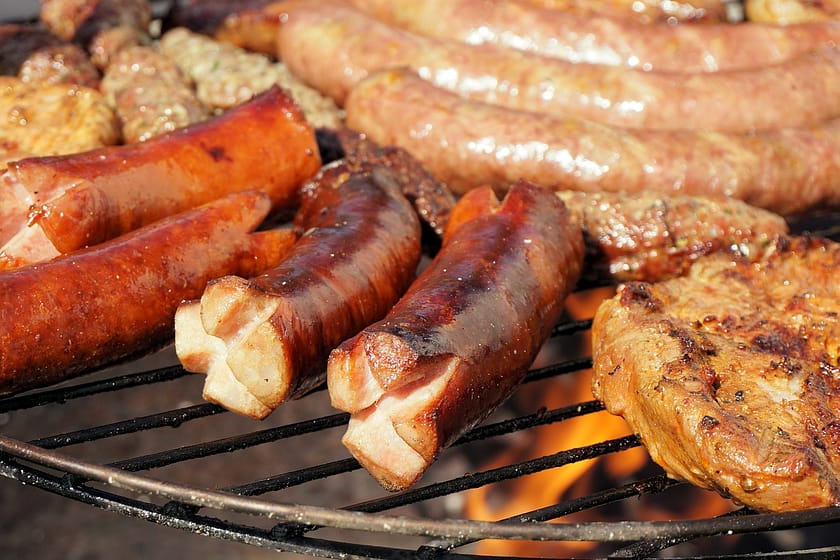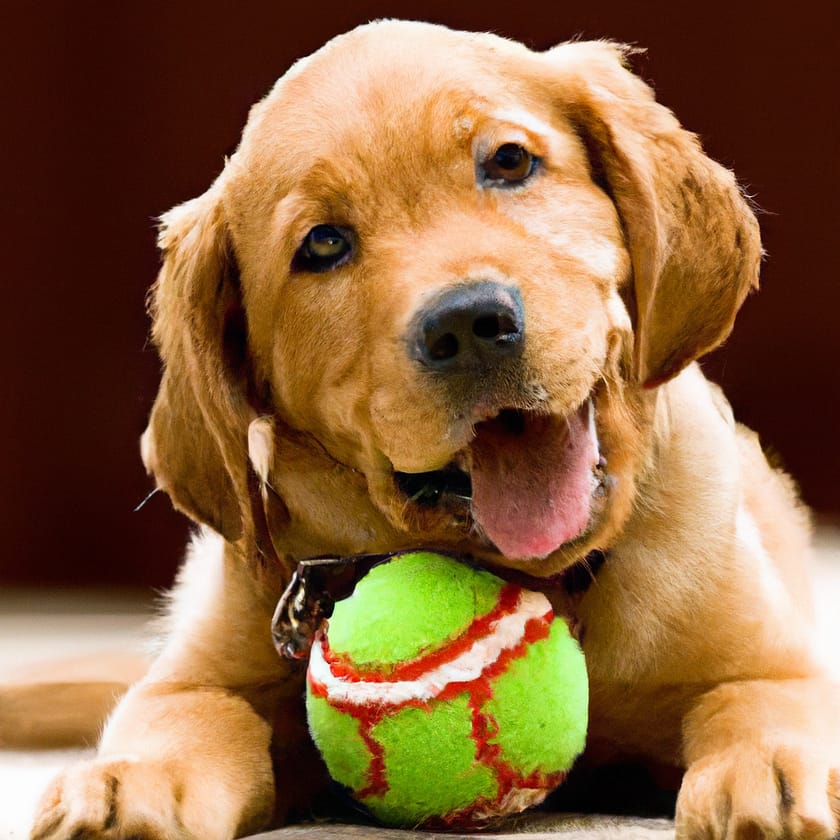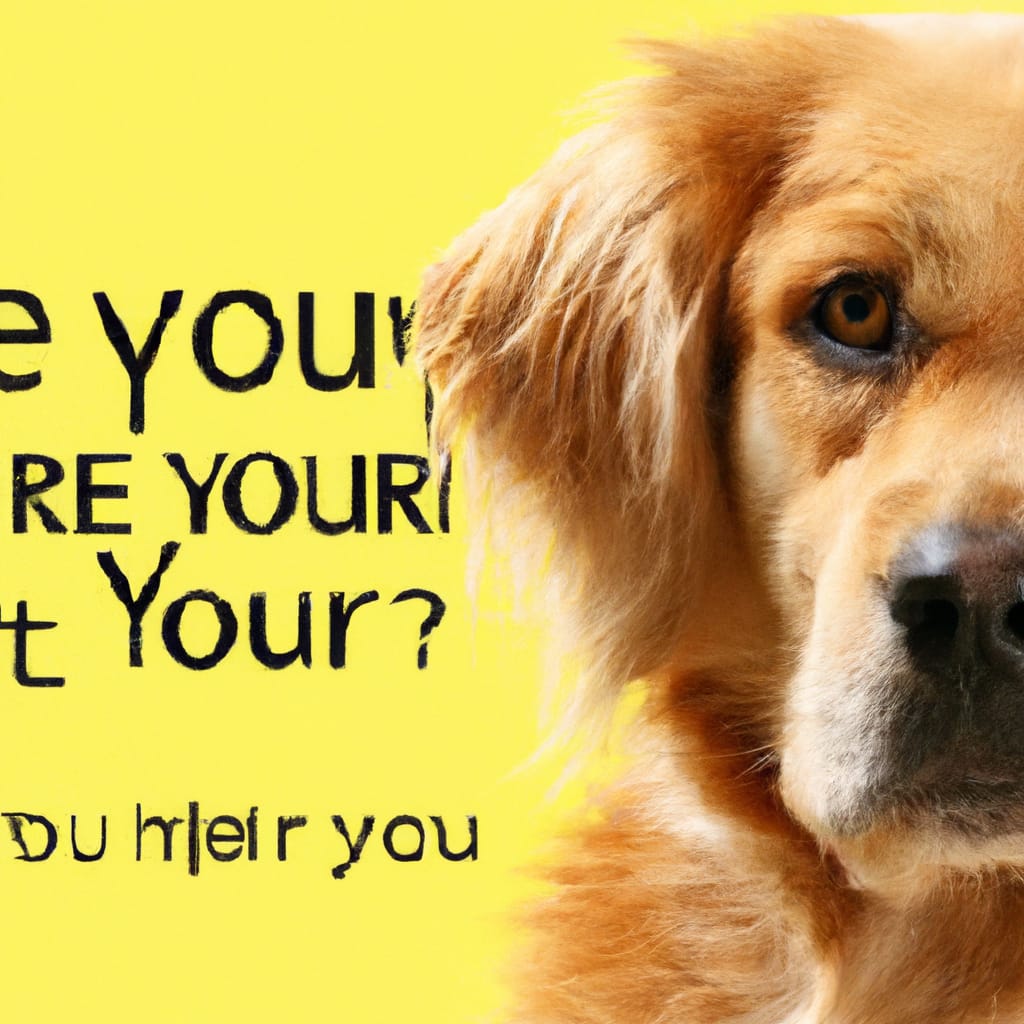Dog-Proofing Your Home: Safety Tips For Pet Owners
Dog-Proofing Your Home: Safety Tips For Pet Owners
Owning a dog can bring immense joy and companionship to your life. However, it’s important to create a safe and secure environment for your furry friend to prevent accidents and mishaps. In this article, we will explore some practical and easy-to-follow safety tips that will help you dog-proof your home effectively. From securing hazardous objects to creating a cozy and comfortable space, these tips will ensure that your beloved pet can roam freely without any danger lurking around the corner. So, get ready to make your home a haven for your dog and enjoy a worry-free life together!
Secure Your Outdoor Space
Fencing and Gates
When it comes to dog-proofing your outdoor space, one of the first things you’ll want to address is your fencing and gates. Ensure that your fence is tall enough and secure so that your furry friend can’t jump over or dig under it. Regularly inspect the fence for any holes or weak spots that could potentially allow your dog to escape. Additionally, make sure your gate is equipped with a latch that your pup can’t easily figure out how to open.
Outdoor Plants and Chemicals
While beautiful outdoor plants can enhance the aesthetics of your space, it’s important to be mindful of which plants you choose if you have a dog. Some common plants, such as lilies, azaleas, and tulips, can be toxic to dogs if ingested. Research which plants are safe for your furry friend and avoid planting anything that could be harmful. Furthermore, be cautious of any chemicals, such as fertilizers or pesticides, that you use in your outdoor space. Keep them securely stored and away from your dog’s reach.
Toxic Substances
In addition to outdoor plants and chemicals, there are other toxic substances that you should keep out of your dog’s reach. This includes things like antifreeze, certain medications, and even some household cleaning products. Keep these items stored securely in a cabinet or on a high shelf where your pup can’t access them. It’s always a good idea to consult your veterinarian for a comprehensive list of substances to avoid.
Pools and Water Features
If you have a pool or any other water features in your outdoor space, take the necessary precautions to ensure your dog’s safety. Make sure your pool is properly fenced off or equipped with a sturdy cover to prevent any accidental falls. It’s also important to teach your pup how to safely exit the pool if they do happen to take a swim.
Trash and Recycling Bins
Dogs have an incredible sense of smell, which often leads them to investigate the enticing aromas coming from your trash and recycling bins. To avoid any potential hazards, invest in sturdy bins with secure lids or keep them stored in a dog-proof area such as a locked shed. This will help prevent your curious canine from scavenging and potentially ingesting anything harmful.
Make Your Indoor Environment Safe
Eliminate Hazardous Houseplants
Just as you need to be cautious with outdoor plants, it’s important to consider the safety of your indoor houseplants as well. Some common houseplants, such as philodendrons and pothos, can be toxic to dogs if ingested. Research pet-friendly houseplants or opt for artificial plants to create a green and safe environment for your furry friend.
Secure Electrical Cords
Dangling electrical cords can be tempting for curious pups to chew on, posing a serious risk of electrical shock. To prevent any accidents, secure cords against walls or use cord covers to keep them out of your dog’s reach. Another option is to invest in cordless options for certain appliances or electronics to minimize the risk altogether.
Store Toxic Cleaning Products
Cleaning products are essential for maintaining a clean home, but they can also be harmful if consumed or even just sniffed by your dog. Keep all toxic cleaning products, such as bleach, window cleaner, and floor disinfectants, safely stored in a locked cabinet or high shelf. Consider using pet-friendly cleaning alternatives or make your own using natural ingredients like vinegar and baking soda.
Protect Your Garbage and Food Storage
Similar to outdoor trash bins, securely storing your indoor garbage and food storage is crucial in preventing any unwanted encounters with your pup. Invest in trash cans with secure lids or use dog-proof trash cans that are designed to keep your curious canine out. Additionally, keep all food items stored away in sealed containers or in cabinets that your dog can’t access.
Prevent Access to Small Objects
Dogs have a knack for finding small objects and often see them as potential toys. However, these small objects can pose a choking hazard if ingested. Be mindful of leaving items like coins, buttons, or small toys within your dog’s reach. Regularly scan your home for any potential hazards and make sure to pick up and secure any small objects.

Prevent Accidents in the Kitchen and Bathroom
Keep Countertops Clear
Countertops in the kitchen and bathroom can be a haven for various items that can pose a danger to your dog. Make it a habit to keep countertops clear of any potentially harmful objects like knives, medication bottles, or toxic cleaning products. This will prevent your pup from accidentally knocking them over or getting into something they shouldn’t.
Secure Trash Cans
Just like outdoor and indoor trash bins, it’s important to secure your kitchen and bathroom trash cans. Dogs are naturally drawn to interesting smells, and the contents of your trash can be quite tempting. Invest in dog-proof trash cans with sturdy lids or keep your trash cans in a locked cabinet or pantry to prevent your pup from rummaging through them.
Store Cleaning Products Properly
Cleaning products, especially those used in the kitchen and bathroom, can be harmful if ingested by your furry friend. Store all cleaning products in a secure cabinet or on a high shelf where your dog can’t reach them. Consider using pet-safe cleaning products or natural alternatives that are safe for both your dog and the environment.
Close Toilet Lids
An open toilet can be a source of fascination for some dogs, but it can also be a safety hazard. Keep toilet lids closed to prevent your dog from drinking or playing in the water. Additionally, make sure to close bathroom cabinets securely to restrict access to potentially hazardous substances like medications or cleaning supplies.
Keep Medications Out of Reach
Medications, both prescription and over-the-counter, can be extremely dangerous if ingested by your dog. Always store medications in a secure location, such as a locked medicine cabinet or a high shelf. Be mindful of any medications that you might leave out on countertops or bedside tables, as your furry friend’s curiosity might lead them to investigate.
Keep Dangerous Foods Out of Their Reach
Chocolate and Caffeine
While delicious for humans, chocolate and caffeine can be toxic to dogs. These tasty treats contain theobromine, which can cause serious health issues if ingested. Keep all chocolate products, coffee grounds, and caffeinated beverages out of your dog’s reach. If your pup does consume any of these substances, contact your veterinarian immediately.
Grapes and Raisins
Grapes and raisins are particularly dangerous for dogs, as they can cause kidney failure. Even small amounts can be harmful, so make sure to keep all grape or raisin-containing products away from your furry friend. This includes snacks, baked goods, and even certain types of wine.
Onions, Garlic, and Chives
Onions, garlic, and chives, whether raw, cooked, or in seasonings, can cause serious health problems in dogs. These ingredients contain compounds that can damage a dog’s red blood cells and lead to anemia. Be cautious when cooking and avoid giving your dog any meals that contain these potentially harmful ingredients.
Xylitol
Xylitol, a common sugar substitute found in many sugar-free products, can be highly toxic to dogs. It can cause a rapid drop in blood sugar levels and may even result in liver failure. Keep all products sweetened with xylitol, including gum, candy, and certain peanut butter brands, out of your dog’s reach.
Alcohol
Alcohol is toxic to dogs, and even small amounts can cause severe health issues. Keep all alcoholic beverages out of your dog’s reach to prevent them from consuming it accidentally. Be especially vigilant during parties or gatherings where drinks may be left unattended.

Choose Pet-Friendly Houseplants and Decorations
Non-Toxic Houseplants
Having plants indoors can provide a soothing and refreshing environment, but it’s important to choose pet-friendly options. Some houseplants, such as aloe vera, snake plants, and Boston ferns, are safe and non-toxic for dogs. Before bringing any plants into your home, research their toxicity levels and ensure they won’t pose a danger to your furry friend.
Avoid Toppling Hazards
Some decorations or larger houseplants can be unstable and prone to toppling over. This poses a risk not only to your decorations but also to your dog if they’re nearby. Make sure to secure any wobbly decorations or heavy houseplants to prevent them from falling and potentially injuring your furry friend.
Decorations and Ornaments
Around special holidays or festive seasons, it’s common for households to bring out decorations and ornaments. However, some of these decorations can be harmful if consumed by a curious dog. Keep fragile ornaments, tinsel, and decorations with small parts out of your dog’s reach to prevent choking or other injuries.
Candles and Fragrances
Candles and scented products, such as air fresheners and potpourri, can create a cozy atmosphere but can also pose a hazard for your pet. Open flames from candles can be dangerous, especially if your dog likes to investigate or has a wagging tail! Opt for flameless candles or other pet-safe alternatives. Be cautious with scented products as well, as certain fragrances can be irritating or toxic to dogs.
Choosing Safe Flooring
While it may not be the first thing that comes to mind when dog-proofing your home, choosing the right flooring is important for your pet’s safety. Avoid flooring options that can be slippery and cause your dog to lose their balance, such as highly polished hardwood or tile. Opt for flooring with good traction to minimize the risk of accidents and injuries.
Safety Measures for Stairs and Elevated Areas
Secure Staircases and Balconies
Stairs and balconies can be potential hazards for dogs, especially if they are unsecured or have gaps that a small dog could slip through. Make sure staircases have sturdy railings on both sides to prevent falls. For balconies, use secure railings or install pet-specific balcony netting to keep your dog safe.
Install Stair Gates
If you have a multi-level home, installing stair gates can be an effective way to restrict your dog’s access to certain areas. This is especially useful if you have stairs that your dog may not be able to navigate safely. Ensure that the stair gates are secure and designed specifically for use with pets.
Cover Gaps Between Railings
Some railings, both indoors and outdoors, may have gaps that a small or curious dog could squeeze through. Close these gaps by installing mesh or other suitable materials to prevent any potential accidents or escapes. Regularly check for any loose or worn sections and repair them promptly.
Block Off Upper Floors
If you have upper floors that you don’t want your dog to have access to, consider blocking off those areas entirely. This can be done with gate barriers or by simply keeping the doors to those floors closed. This will prevent your pup from wandering into potentially dangerous areas or accidentally falling down the stairs.

Avoid Leaving Items Within Reach
Secure Trash Bins
Indoor trash bins can contain spoiled food, sharp objects, or other hazardous materials that your curious dog may be tempted to explore. Ensure that your trash bins have secure lids or consider using dog-proof trash cans that are designed to keep your pup out. It’s also important to promptly dispose of any hazardous waste, such as batteries or cleaning products, in a separate and secure location.
Put Away Shoes and Clothing
Dogs are notorious for their love of chewing on shoes and clothing. To avoid any mishaps, make it a habit to put away your shoes and clothing in closets or storage areas. This will not only protect your belongings but also prevent your dog from swallowing any small parts or potentially harmful materials.
Hide Electrical Cords
Electrical cords can be tantalizing toys for some dogs or even pose a risk of electrical shock if chewed on. Keep all electrical cords out of your dog’s reach by securing them against walls or using cord covers. It’s also a good idea to use cord organizers or outlets with built-in cord management to minimize the temptation for your pup.
Remove Access to Valuables
Just like a mischievous toddler, dogs are known to investigate and sometimes chew on items that they find intriguing. To avoid any mishaps, keep valuable items like jewelry, remotes, or small electronics safely stored away in closed cabinets or drawers. This will prevent your dog from accidentally ingesting small parts or damaging cherished possessions.
Lock Cabinets and Drawers
Cabinets and drawers that contain potentially hazardous substances should be securely locked to prevent your dog from accessing them. These can include cabinets with cleaning supplies, medications, or other toxic substances. Invest in childproof locks or latches to ensure that your furry friend can’t open them, no matter how hard they may try.
Create a Safe Space for Your Dog
Provide a Comfortable Dog Bed
Having a designated and comfortable space for your dog is essential for their well-being and safety. Provide your furry friend with a cozy dog bed that they can retreat to whenever they need rest or downtime. Make sure the bed is the appropriate size for your dog and placed in a quiet area away from any potential disturbances.
Limit Access to Hazardous Areas
Identify any areas in your home that may be hazardous for your dog, such as the laundry room or garage. Use baby gates or other pet-specific barriers to limit or block access to these areas. This will prevent your dog from encountering dangerous substances or getting into potentially harmful situations.
Use Baby Gates to Separate Rooms
If you want to restrict your dog’s access to certain rooms or areas of your home, baby gates can be a practical solution. These gates can be installed to keep your dog out of areas like the kitchen, where they may be at risk of getting burned or ingesting something harmful. Make sure to choose sturdy gates that are appropriate for the size and breed of your dog.
Keep Electrical Wires Out of Reach
Exposed electrical wires can pose a risk of electric shock if chewed on by your dog. To ensure their safety, secure electrical wires against walls or use cord covers. Consider using cord concealers or outlets with built-in cord management to minimize the temptation for your curious pup.
Consider Crate Training
Crate training can be a valuable tool in creating a safe space for your dog, especially when you’re unable to directly supervise them. A crate becomes a den-like area where your dog can feel secure and comfortable. Make sure to choose an appropriately sized crate for your dog and gradually introduce them to it using positive reinforcement techniques.

Prevent Common Household Injuries
Teach Your Dog to Avoid Jumping on Furniture
Allowing your dog to jump freely on furniture can lead to potential injuries or damage to household items. Teach your dog commands such as “off” or “down” to discourage them from jumping on or off furniture without permission. Provide them with designated comfortable spaces, like their own dog bed, where they can relax instead.
Protect Against Burns and Scalds
Dogs can be curious and may accidentally come into contact with hot surfaces or liquids in the kitchen or bathroom. Be cautious when cooking or using hot water and ensure that your dog is not in close proximity to any potential hazards. Keep pot handles turned inward on the stovetop and never leave hot appliances unattended.
Watch Out for Open Windows
Open windows can be an invitation for your dog to explore or even accidentally fall out. Make sure windows are screened or operated with window locks that prevent your dog from pushing them open. Be vigilant when opening windows and ensure that your dog cannot squeeze through any openings.
Eliminate Falling Hazards
Potential falling hazards, such as loose or unsecured objects on shelves or countertops, can pose a danger to your dog. Regularly check all shelving units, bookcases, or other elevated surfaces to make sure items are secure and cannot be accidentally knocked off by your pup. Consider using wall anchors or brackets to secure heavy objects.
Keep Doors and Windows Secure
Securing doors and windows throughout your home is crucial to prevent your dog from escaping or accessing areas that may pose a risk. This includes using door and window locks, ensuring your dog cannot nudge open doors, or even installing pet-specific screens or barriers.
Prepare for Emergencies
Learn Pet First Aid and CPR
Knowledge of pet first aid and CPR can be invaluable in the event of an emergency. Consider taking a pet first aid class or consulting with your veterinarian for guidance. Being prepared to handle potential injuries or health crises can make a significant difference in ensuring your dog’s safety and well-being.
Create a Pet Emergency Kit
Having a pet emergency kit readily available can help you respond effectively in emergency situations. The kit should include essentials such as a pet first aid handbook, emergency contact information, copies of important documents, a supply of any necessary medications, and basic first aid supplies. Make sure to regularly check and restock the kit as needed.
Identify Emergency Exits and Shelter Areas
In the event of a natural disaster or emergency, it’s important to have a plan and designated safe areas for your dog. Identify emergency exits in your home and establish a safe shelter area where your furry friend can seek refuge. This could be a designated room or an area away from windows and potential hazards.
Establish an Emergency Contact List
Create a list of emergency contacts that include your veterinarian’s contact information, local animal hospitals, and any other relevant emergency services. Keep this list in a prominent location, such as on your fridge or in your pet emergency kit, so it’s easily accessible in case of an emergency.
Be Aware of Poison Control Hotline
Familiarize yourself with the contact information for your local or national poison control hotline. This is a valuable resource if you suspect your dog has ingested something toxic, as they can provide immediate guidance and assistance. Keep the hotline number stored in your phone or posted in a visible location for easy access.
By taking these dog-proofing measures and incorporating them into your home, you can create a safer and more secure environment for your furry friend. While accidents can still happen, being proactive and implementing these safety tips can greatly reduce the risk of injury or harm to your beloved pet. Remember, a little effort goes a long way in ensuring the well-being and happiness of your four-legged companion.








